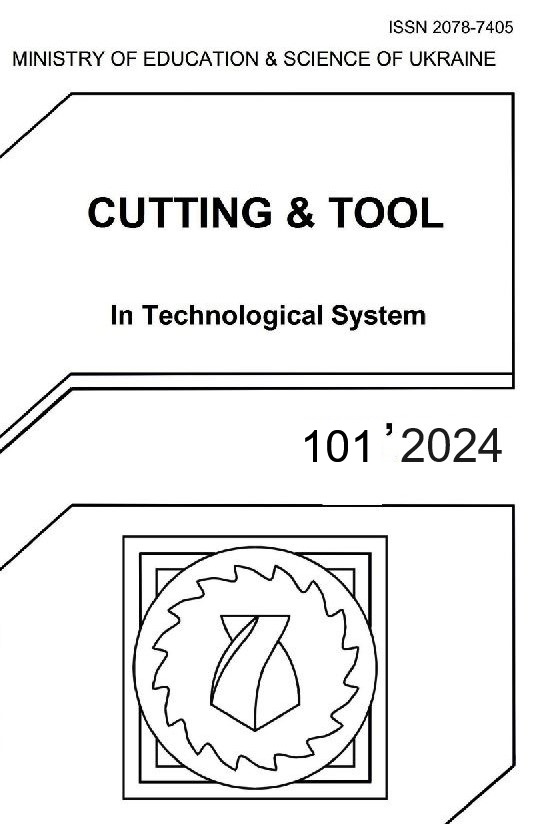A REVIEW OF ADDITIVE MANUFACTURING TECHNOLOGIES AND THEIR APPLICATIONS IN THE MEDICAL FIELD
DOI:
https://doi.org/10.20998/2078-7405.2024.101.01Keywords:
Additive Manufacturing, medical imaging, Selective Laser SinteringAbstract
This review paper contains a literature survey about some additive manufacturing technologies and their medical use. Additive Manufacturing is a generic term referring to several technologies used to create physical models or prototype parts based on 3D drawings. Additive Manufacturing models can be used for various testing methods. The paper summarizes the application of Additive Manufacturing Technologies in medicine. It describes the main steps for how to create 3D models for medical applications. Some details can be found on the topics: Data acquisition using medical scanners; Data transformation; Creation of virtual 3D models; Surgical planning and simulation on the virtual 3D model; and Creation of Physical 3D Models for Additive Manufacturing Technologies. 3D physical models can be extremely useful in planning complex surgical interventions, which can be simulated on these models before the actual procedure.
References
Berce P., Bâlc N., Ancău M., ş.a.: Fabricarea Rapidă a Prototipurilor, Ed. Tehnică, Bucureşti, (2000).
Boboulos Miltiadis A.: CAD-CAM & Rapid Prototyping Applications Evaluation. Ventus Publishing ApS, (2010), ISBN 978-87-7681-676-6.
Bibb Richard, Winder John A review of the issues surrounding three-dimensional computed tomography for medical modelling using rapid prototyping techniques. Radiography, Volume 16, Issue 1, February (2010), pp. 78‒83.
Yan Y., Shengjie L., Renji Z., Feng L., Rendong W., Qingping L., Zhuo X., Wang X.: Rapid Prototyping and Manufacturing Technology: Principle, Representative Technics, Applications, and Development Trends, Tsinghua Science & Technology, Volume 14, Supplement 1, June (2009), pp. 1‒12.
Venuvinod P. K. and Weiyin M.: Rapid Protoyping, Laser-based and Other Technologies. Kluwer Academic Publishers, 2004, ISBN 978-1-4419-5388-9.
Borzan C.: Theoretical and experimental research regarding manufacturing by selective laser sintering of custom implants from biocompatible materials, PhD Thesis, Technical University of Cluj-Napoca (2014).
Louh R.F., Ku Yiwen, Tsai Irene: Rapid Prototyping: Fast Track to Product Realization. Society of Mechanical Engineers, 1994, Rapid prototyping technique for ceramic minidevices containing internal channels with asymmetrical contour, Journal of the European Ceramic Society, Volume 30, Issue 14, October (2010), pp.: 2841‒2847.
Popat A.H.: Rapid prototyping and medical modeling, Phidias Newsletter, Denmark, 1998;1, pp.: 10‒12.
Radu. C.: Contributions to the protection elements of studies through rapid prototyping, PhD Thesis, Transilvania University, Brasov (2009)
Rotaru H.: Reconstrucţii şi modele Tridimensionale Medicale. Ed. Casa Cărţii de Ştiinţă, Cluj-Napoca, (2001).
Hoque E.M.: Advanced applications of Rapid Prototyping technology in modern Engineering, (2011), InTech, Rijeka, Croatia, ISBN 978-953-307-698-0.
Barrett H.H., Swindell W.: Radiological Imaging, The Theory of Image Formation, Detection and Processing, Vol. I, Academic Press, New York, USA, (1981), pp.: 438‒439.
Tărâţă Mihai.: Informatică medicală, SITECH, Craiova ISBN 978-606-530-816-9, vol. I and II, p.: 568, Cap. Analiza si prelucrarea imaginilor medicale, (2010).
Costache A.: DICOM in medical imaging, (2024) https://www.medicai.io/ro/dicom-in-imagistica-medicala.
Patel A. and Goswami T.: Chapter 6. Comparison of Intracranial Pressure by Lateral and Frontal Impacts – Validation of Computational Model, Book: Injury and Skeletal Biomechanics, ISBN 978-953-51-0690-6, (2012).
Radu C.: 3D Modeling and Static Finite Element Analysis of Human Tibia, 99 Advanced Engineering 2, ISSN 1846-5900, (2008).
MIMICS. Reference Guide Version 10.0, Belgia: Materialise, (2006),
Dhoore E.: Software for Medical Data Transfer, Rapid Digital Manufacture in Complex Medical Treatments, John Wiley & Sons, Ltd., Hong-Kong, (2005), ISBN 0-470-01688-4.
Christensen A. M., Humphries S. M.: Role of Rapid Digital Manufacture in Planning and Implementation of Complex Medical Treatments, Rapid Digital Manufacture in Complex Medical Treatments, John Wiley & Sons, Ltd., Hong-Kong, (2005), ISBN 0-470-01688-4.
Palm G., Shafie, A.M.: Product Model Driven Laser Sintering, Proceeding of the 5th European Conference on Rapid Prototyping and Manufacturing, Helsinki, Finland, 4th – 6th June (1996),
R.D. Goodridge, C.J. Tuck, R.J.M. Hague: Laser sintering of polyamides and other polymers, Progress in Materials Science 57 (2012) pp.: 229–267.
H. Yehia, A. Hamada, T. A. Sebaey, W. Abd-Elaziem: Selective Laser Sintering of Polymers: Process Parameters, Machine Learning Approaches, and Future Directions, J. Manuf. Mater. Process. (2024) 8, 197,
M. U. Azam, I. Belyamani, A. Schiffer, S. Kumar, K. Askar.: Progress in selective laser sintering of multifunctional polymer composites for strain- and self-sensing applications, Journal of Materials Research and Technology, Volume 30, (2024), pp.: 9625‒9646, ISSN 2238-7854.
Downloads
Published
Issue
Section
License
Copyright Notice
Authors who publish with this Collection agree to the following terms:
1. Authors retain copyright and grant the Collection right of first publication with the work simultaneously licensed under a Creative Commons Attribution License that allows others to share the work with an acknowledgement of the work's authorship and initial publication in this Collection.
2. Authors are able to enter into separate, additional contractual arrangements for the non-exclusive distribution of the Collection's published version of the work (e.g., post it to an institutional repository or publish it in a book), with an acknowledgement of its initial publication in this Collection.
3. Authors are permitted and encouraged to post their work online (e.g., in institutional repositories or on their website) prior to and during the submission process, as it can lead to productive exchanges, as well as earlier and greater citation of published work.

